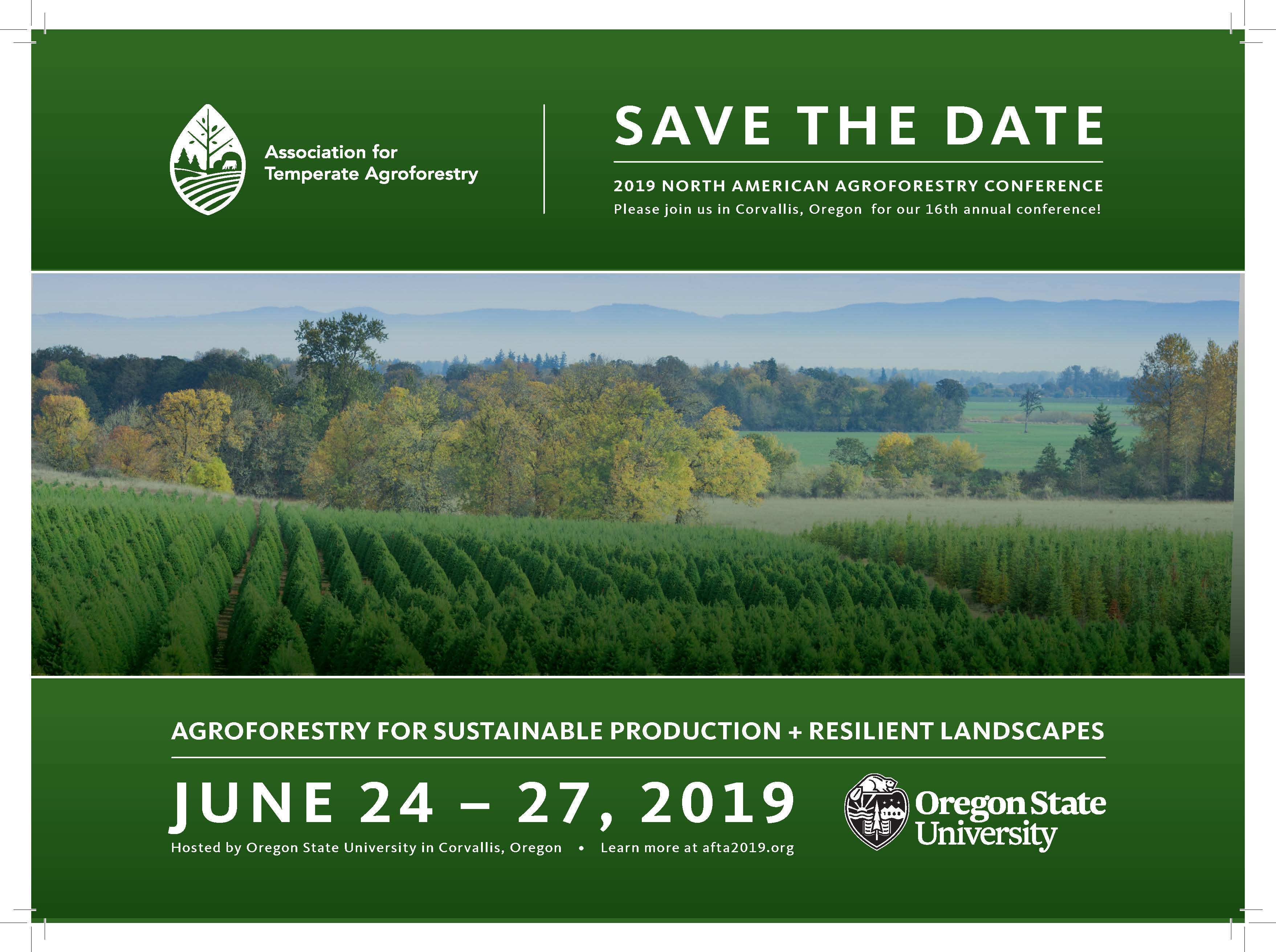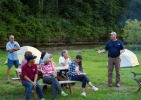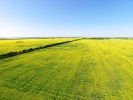| |
Hello Visitor,
Welcome to the November 2018 version of the Temperate Agroforester. The newsletter welcomes contributions for future issues and input or feedback about anything that you read in this issue.
Uma Karki, Christine C. Nieman, Steve Gabriel, Diomy Zamora and Callie Maron, Editors - Temperate Agroforester
Events
2019. 16th North American Agroforestry Conference. Willamette Valley, Corvallis, Oregon.

Call to Action
AFTA needs you! We need your research updates, blog posts, news items and other information to inform our followers. Contact: Andres Anchondo. We are also looking for volunteers to help with membership engagement and website content. Volunteer today to help keep AFTA moving foward.
Membership
Are you a member of AFTA? If not consider joining by clicking here. Your membership gives you access to the members-only area, discounts on conference registration, and helps support AFTA's mission to promote agroforestry.
Contents
Karam Sheban, Forestry Program Specialist with Rural Action; master’s student at the Yale School of Forestry and Environmental Studies
 It’s late afternoon, and the sun is peaking through a gap in the clouds that loom overhead. I’m hunched over my knees in a small metal rowboat (Figure 1), the latest in a series of body postures I’ve assumed in the hope of making myself more comfortable. With me is my friend Helena—a Brazilian who works for NAPRA, the Support Center for the Riverside Populations of the Amazon—her colleague Bruna, and the two community members who picked us up in a nearby town. Our destination is Cuñia Lake, in the north of the Brazilian state of Rondônia, home to an agroforestry-based community. With funds through a federal exchange program* I spent a week at Cuñia in April 2018, supporting the agroforestry activities that sustain the community with the hope of shedding new light on my work at Rural Action with forest landowners in Appalachian Ohio.
Read More
Jacob Grace, Savanna Institute
 On the evening of August 3rd, 2018, farmers and educators gathered around a campfire along the banks of a spring-fed trout stream in southwestern Wisconsin to discuss silvopasture. The group had gathered for a silvopasture workshop hosted by the University of Minnesota Extension, University of Wisconsin Extension, the Wallace Center Pasture Project, and the Savanna Institute. The two-day workshop began with a visit to Nettle Valley Farm near Spring Grove, Minnesota on August 3rd, and concluded with an evening campfire discussion and morning workshop at Willow Creek Ranch in Coon Valley, Wisconsin (Figure 1).
Read More
Lila B. Karki1, Uma Karki1, Sanjok Poudel1, Shailes Bhattarai1 1Tuskegee University Corresponding author’s email: lkarki@tuskegee.edu
 Silvopasture is a sustainable land management system that consists of trees, forages, and grazing animals grown together in a single land unit. This system offers multiple advantages over its components practiced alone. Although the impact of silvopasture may have a complementary, competitive, or independent relationship as illustrated by Chizmar et al. (2018), it offers the highest returns at all discount rates (4% = $1,807.08/acre) with complementary components. This finding is consistent with the experience and perception of the small-scale forestland owners and ranchers, who advocate silvopasture as a complementary component in their farm operations.
Read More
Laura Poppy and Shathi Akhter, AAFC Research Farm, Indian Head, SK, fardausi.akhter@canada.ca
 Since 2016, Agriculture and Agri-Food Canada (AAFC) has been working on a project to help understand how field boundaries affect adjacent agricultural land.
Field boundaries are the non-cropped areas surrounding or adjacent to cropped land. Examples of a field boundary include planted shelterbelts (Figure 1) as well as native buffers (Figure 2). When farmland is consolidated into bigger fields, field boundaries are often removed. But not enough is known about the consequences. Producers often treat non-cropped areas (shelterbelts) as non-productive land that competes with crops for moisture and nutrients (Norris and Kogan 2005). However, studies have shown that shelterbelts increase yield in the 2H to 10H distance from shelterbelt with a maximum increase of 9% at 3H compared to the open field (H=shelterbelt height unit) (Alberta Agriculture and Forestry 2004). But the ecological role of non-cropped habitats within the scope of extensive, modern agriculture has not been fully quantified. There are many species of flora and fauna that are adapted to farmland and many depend entirely on these habitats. Since field boundaries represent an interface between farm practices and the ecosystem, it is desirable that the agricultural industry develop practices that enhance, rather than replace, these natural areas and processes (Leaver 1994).
Read More
|
|





